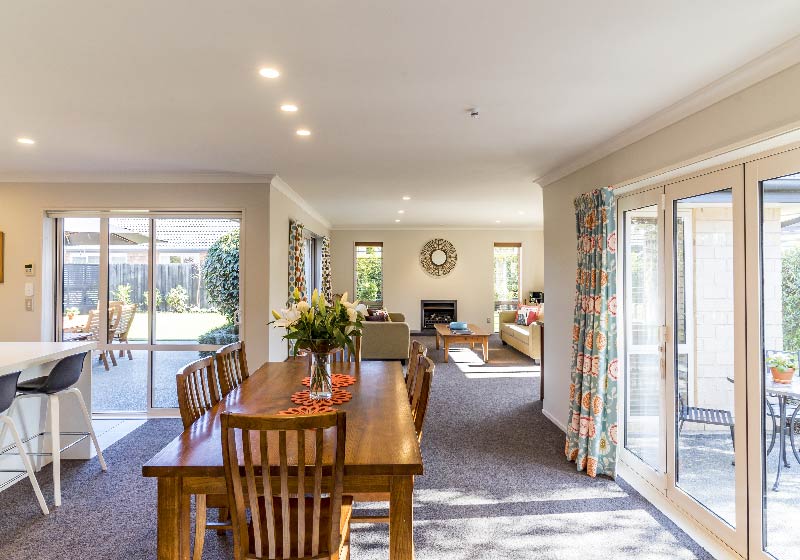An older home feature that’s seeing some resurgence lately is the transom window, also known as transom lights or the rectangular/semicircular window situated above doors or other traditional windows. These windows were originally designed to feed natural light into homes at a height that still offered privacy, and many opened and closed for increased ventilation. These two innovations were greatly appreciated at the time because homes didn’t have artificial lighting or modern ventilation solutions that we enjoy today.
While transom windows are now mostly sought after for their visual appeal, some of their past benefits could make them game changers in the modern home (hint: it’s not as a ventilation solution).
More and more, scientists, psychologists, and homeowners alike are realizing the value of natural lighting as people spend more and more time indoors and out of the sun. Let’s discuss some of the impacts natural lighting has on our bodies, and how home designers are working to bring more of the sunshine inside.
Why is Natural Lighting so Important?
Natural lighting has a powerful impact on humans, their bodies, their minds, their overall health, and even their quality of sleep. This all starts with a nutrient called vitamin D, or “the sunshine vitamin.”
Notably, the sun’s rays do not contain vitamin D. Rather, the sun’s ultraviolet B rays (UVB) making contact with your skin is what instructs your body to generate its own vitamin D. According to health and wellness experts at Healthline, vitamin D deficiency has actually been linked to osteoporosis, cancer, muscle weakness, and depression.
People can receive vitamin D through other sources such as through supplements or through milk, but the difference here is that the body will not generate more vitamin D than it needs. Through contact with sunlight, the body will reach its vitamin D limit and simply stop producing the nutrient until it needs more. Relying on supplements for vitamin D generation can lead to an excess of the nutrient in your system, which can lead to its own slew of issues.
An appropriate level of vitamin D via sunlight is the best way for people to reinforce a healthy lifestyle, and exposure to the sun has been linked to improved focus, productivity, and a better circadian rhythm (our internal clock). Of course, the problem today is that many people work indoors, relax indoors, and their sleeping patterns are disrupted by exposure to artificial lighting and blue lighting from phones, computers, and television screens.
So, how are home designers solving this problem?
How Can Homes Get More Natural Light?
The EPA points out that people spend up to 90% of their time indoors! We’ve previously talked about how commercial buildings are increasingly incorporating natural lighting to become more energy efficient, but with remote working schedules becoming more and more prominent, home designs also need to step up to the plate when it comes to providing sunlight to homeowners.
Transom windows are, of course, one great throwback option that homeowners may be wise to implement into their renovation plans. Transom windows are very effective at making entrances feel more welcoming and at drawing visual interest upwards into areas that can sometimes be ignored. Other windows are a fantastic move as well, whether that’s with skylights, bay windows, or full curtain walls.
Of course, adding extra windows isn’t always an option depending on how the home is configured, so one interesting (and maybe a little odd) alternative to just more windows is something called a “sun tunnel.” To put it simply, a sun tunnel is a long, reflective tube that feeds sunlight directly into the home through the roof. Sun tunnels are an option that tends to shock homeowners by just how bright they can make interior rooms.
Other options for adding sunlight indoors that require less renovation work include painting with brighter, reflective colors (especially white), rearranging furniture to cause less light disruption, and adding more mirrors.
Are There Any Concerns with Natural Lighting Improvements?
As with any home improvement project, natural lighting additions are not without their fair share of concerns. When adding windows or whenever making alterations to the roof, the first area of attention should always be water intrusion.
The best kind of roofs are the ones that have zero penetrations when it comes to water intrusion, but of course, this isn’t a realistic expectation for the modern home. Skylights, sun tunnels, and other windows add the same sort of water access into homes as things like chimneys, vents, and dormers. Although skylights in particular may have a negative reputation when it comes to leaking and water damage, proper flashing should be enough to counter this risk.
Natural lighting has clear physiological and psychological benefits for the human body, and homes that have plenty of natural lighting can even discourage mold from growing indoors! For a healthier and happier home, be sure to add a few of these options to your home improvement plans!
Contact National Property Inspections today to learn more about the dangers of water intrusion and how to ensure your home is keeping your family healthy! And for all your home inspection needs, call NPI before you buy.



